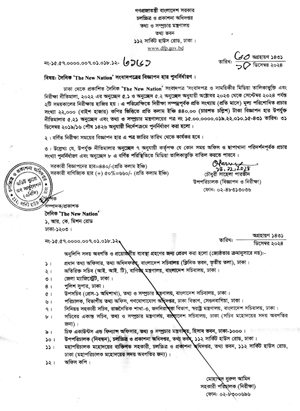Staff Reporter :
The non-bank financial institutions (NBFIs) in Bangladesh have been grappling with a significant increase in bad loans over the past three years.
According to data from the Bangladesh Bank, the total amount of defaulted loans in the NBFIs surged to Tk 24,711 crore in the April-June quarter this year, a nearly two-and-a-half times increase from the same quarter in 2021, when the total defaulted loan amount was Tk 10,328 crore.
At the end of June this year, the total outstanding loan amount in the NBFIs stood at Tk 74,533 crore, with a staggering 33 per cent of the total loan amount becoming defaulted.
In contrast, in June 2021, the total default loan of the non-bank financial institutions was only 15.39 per cent of the loans disbursed.
The latest central bank data also revealed that one-third of the non-bank financial institutions (NBFIs) out of a total 35 are holding nearly 73.5 per cent of the sector’s bad loans, with Tk 18,164.5 crore bad loans concentrated in 12 NBFIs.
The NBFIs with the highest amount of bad loans are Aviva Finance, Bangladesh Industrial Finance Company Limited (BIFC), Fareast Finance, First Finance, FAS Finance, International Leasing, People’s Leasing, Phoenix Finance, Premier Leasing, Union Capital, Infrastructure Development Company Limited (Idcol), and Uttara Finance.
Furthermore, six of these NBFIs, including People’s Leasing and Financial Services, Bangladesh Industrial Finance Company, Fareast Finance, and First Finance, have more than 90 per cent of their respective loan disbursements classified as bad loans. This is a worrying trend, as it indicates that these institutions are struggling to recover their loans.
The sector insiders have pointed out that the loan disbursement process in many non-banks is not transparent, and these institutions have lent money to ghost companies without adequate verification.
They also highlighted that NBFIs suffer most in Bangladesh as they are providing long-term loans with short-term funds, which is the opposite of the global practice.



